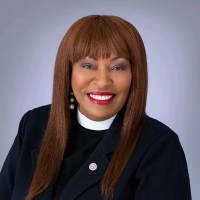Morgan State University is making strides to go where no other HBCU has gone and gain R1 status.
As of right now, no HBCU in the nation has R1 status, Morgan State University is seeking to change that. R1 status means “Doctoral/Very High Research Activity” and is the highest ranking awarded by the Carnegie Classification of Institutions of Higher Education. Morgan State President David Kwabena Wilson says the University is fit for the title.
“It’s so important for Morgan to be a resident on the penthouse level of research because there’s no other institution—no other HBCU—on that floor like us, and we’re moving boldly towards reaching the higher echelon of Carnegie Classified universities,” said Wilson “Attaining R1 (‘very high research’) classification is a lofty goal for Morgan, but we are primed for the challenge, understanding that attaining R1 will not only raise our profile within the research and scientific community but also help to ensure Morgan students have access to the expertise, facilities, and curricula to prepare them for an increasingly competitive marketplace.”

According to Technical.ly, there are the main criteria for R1 schools to fulfill:
- Award at least 20 research/scholarship doctoral degrees during the update year, which takes place every three years and
- Spend at least $5 million in total research expenditures, as reported through the National Science Foundation’s Higher Education Research & Development Survey
- Score high on the Research Activity Index calculation, which is an aggregate level of overall and per capita research activity. The calculation takes research spending and research hiring measures before dividing it by the number of full-time assistant, associate and full professors.
In an effort to meet these qualifications, Morgan State has created the National Center for Equitable Artificial Intelligence and Machine Learning Systems and invested $20.1 million to start designing a $150 million-dollar science center. They are also competing to land a $120 million Department of Defense (DoD)-affiliated research center.
According to Technical.ly, Wilson described the center as the university’s “North Star.”
“It underpins Morgan’s 10-year strategic plan and our campus’ full commitment to providing upward social and economic mobility for our students,” said Wilson. “It is quintessential that we are preparing Morgan graduates for the work of the future and the future of work. We are intentional about achieving R1 classification and this intentionality is rooted in investing wisely in ourselves.”
Maryland Higher Education Secretary Dr. James D. Fielder describes this striving toward R1 status as an opportunity to create more equity in STEM fields.
“The R1 distinction recognizes the strength and quality of the institution’s research programs, and the diversity perspective of these programs are critical to promoting positive change for our state’s workforce and our robust economy,” Fielder told Technical.ly. “The distinction would also allow Maryland’s HBCUs to further engage with industry, and to increase student diversity within STEM education programs, which is an integral part of the Maryland Higher Education Commission’s four-year State Plan.”
Dr. Willie E. May, Morgan State’s vice president for research and economic development told Technical.ly. “Let’s face it. It’s a merit badge, we’ll proudly wear that merit badge, but as I was trying to make a point: What we have to do is make sure that we continue to serve our community and prepare students to be successful in their careers, in life — and prepare them to support this country in our global competitiveness.”
Morgan State has a 10-year strategic plan to reach R1 status by 2030 but May believes the university is on track to reach it by 2027. He added that the university will strive to support the surrounding community by being Maryland’s preeminent public urban research university.
“We’re not going to try to be Hopkins, College Park or UMBC,” May said. We’re going to focus an increasing amount of our research on addressing problems of the urban condition.”



